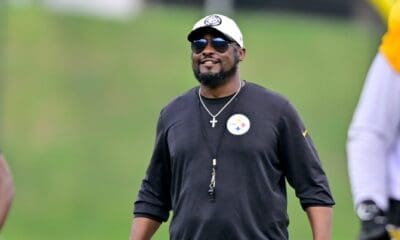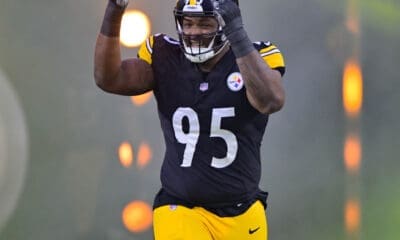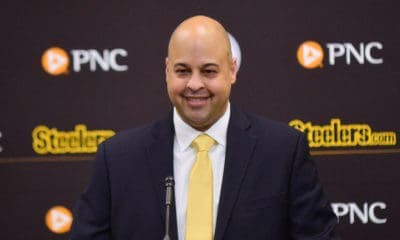NFL Draft
Steelers Draft Picks in the 21st Century By Position: Running Back
Since joining the Steelers in 2000, Kevin Colbert has had a major hand in every draft, first working alongside Bill Cowher and then Mike Tomlin.
We recently looked at all of Colbert’s picks since 2010 as well as every Steelers 2nd round pick since the year 2000.
While there have been well-documented struggles with certain positions–defensive backs come to mind–there have also been notable successes such as linebackers and wide receivers in later rounds.
Today we begin a series looking at Steelers draft picks position by position since the 2000 season. We’ll start with one that the Steelers could look to with their 2nd round pick, running backs.
2000-2007: Thanks to the presence of future Hall of Famer Jerome Bettis and then undrafted phenom Willie Parker, the Steelers largely stayed away from the running back position in the draft.
2000: None
2001: None
2002: 5th round, Verron Haynes from Georgia
2003: 7th round, J.T. Wall from Georgia
2004: None
2005: 7th round, Noah Herron from Northwestern
2006: 7th round, Cedric Humes from Virginia Tech
2007: none
2008: 1st round, Rashard Mendenhall from Illinois
The brief Rashard Mendenhall era begins as the Steelers spend their 1st round pick (23rd overall) on the Illinois back. Mendenhall would replace Parker as the team’s number one back starting in 2009, helping the Steelers to the Super Bowl in 2010. Mendenhall would spend three year’s as the team’s primary back but never really lived up to the 1st round billing.
Following Mendenhall’s pick, the Steelers mainly took flyers on late round backs.
2009: 5th round, Frank Summers from UNLV
2010: 6th round, Jonathan Dwyer from Georgia Tech
2011: 7th round, Baron Batch from Texas Tech
2012: 5th round, Chris Rainey from Florida
2013: 2nd round, Le’Veon Bell from Michigan State
The Steelers strike pay dirt with 2nd round selection Le’Veon Bell. The Michigan State running back would fully blossom in his sophomore season becoming one of the best running backs in the NFL. A duel threat who was nearly as good out of the backfield as he was carrying the ball, Bell was named All-Pro twice in his five years with the team and had three seasons of over 1800 yards from scrimmage.
With Bell as the workhorse in the backfield, the Steelers chose not to draft a back in three consecutive seasons.
2014: none
2015: none
2016: none
2017: 3rd round, James Conner from Pitt
The Steelers used their second 3rd round pick on the bruising running back from Pitt. Somewhat of a surprise at the time considering Bell’s status as one of the league’s premier backs. Conner had just come back from cancer with a strong junior season at Pitt. It was a fortunate selection as Bell held out in 2018 and eventually left the team. Conner showed promise despite an injury shortened 2018 as the primary back. 2019 was also beset by injuries and now Conner finds himself amongst a stable of backs competing for the role of primary ball carrier in 2020.
2018: 5th round, Jaylen Samuels from North Carolina State
2019: 4th round, Benny Snell from Kentucky
A year after Conner’s breakout, the Steelers used a 4th round selection on Kentucky running back Benny Snell. Snell appeared in 13 games, starting two as Conner dealt with more injuries, and tallied 426 yards on the ground and a 3.9 average yards per carry. Snell will share the Steelers’ backfield with Conner, 2018 pick, hybrid back Jaylen Samuels and possibly the Steelers 2020 selection if they select another running back.
2000-2020 draft running back breakdown
Selections by round:
1st round: 1
2nd round: 1
3rd round: 1
4th round: 1
5th round: 4
6th round: 1
7th round: 4
Selections by conference:
SEC: 4
ACC: 4
Big 12: 1
Big 10: 3
PAC 10: 0
Power 5: 12
Group of 5: 1
The Steelers have never selected more than one running back in a draft class since 2000. … Since Colbert took over, the team has picked a running back in 13 out of 20 drafts. … Of the 13 backs picked, only one — Frank Summers from UNLV in 2009 — was from a non-Power 5 school.

















